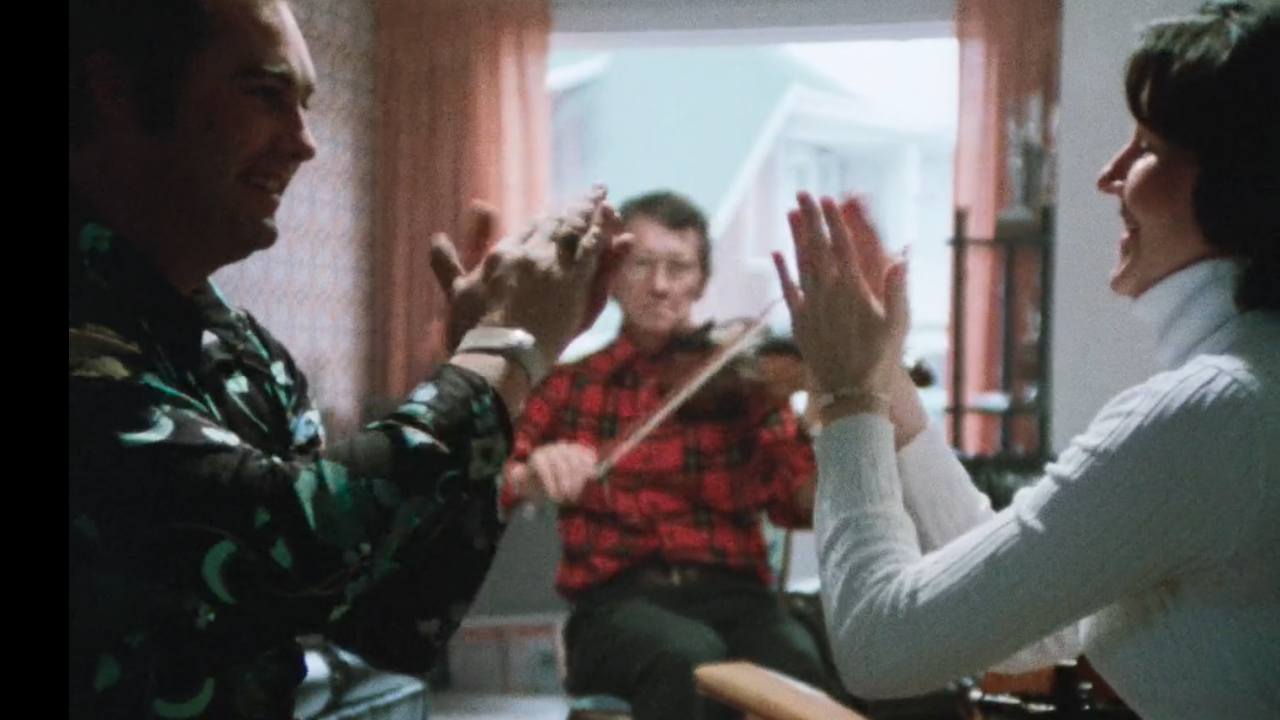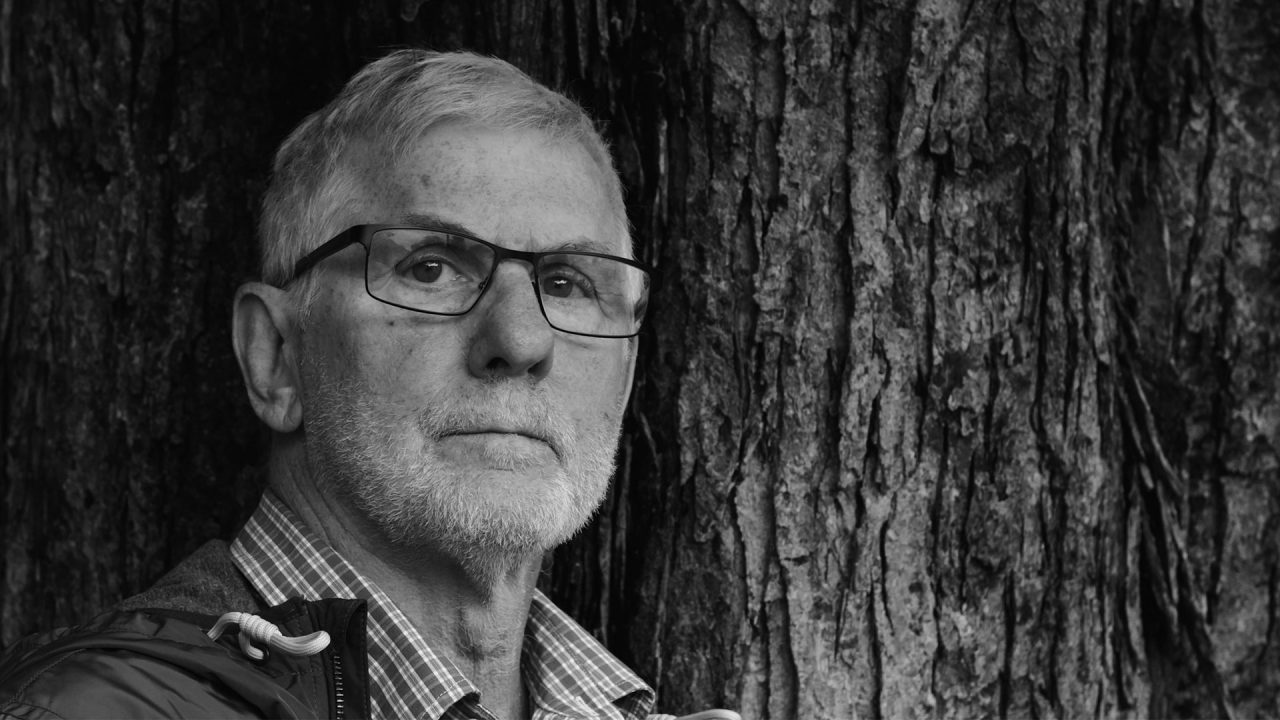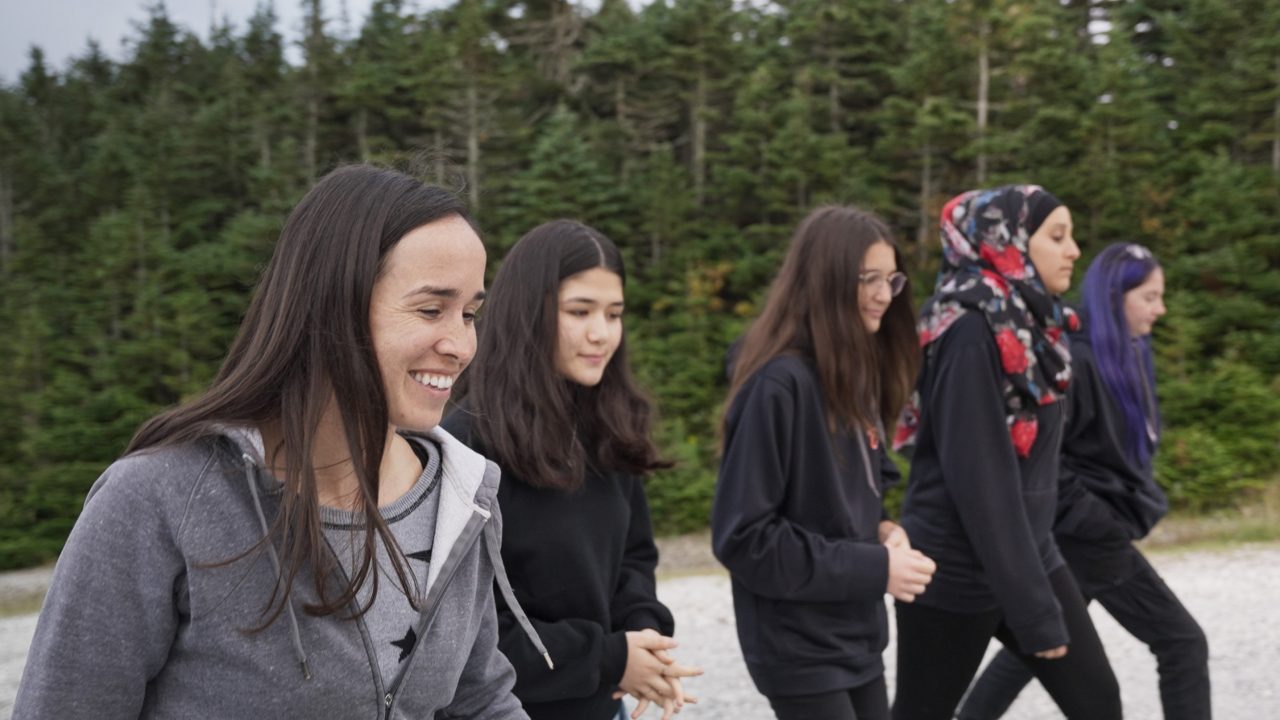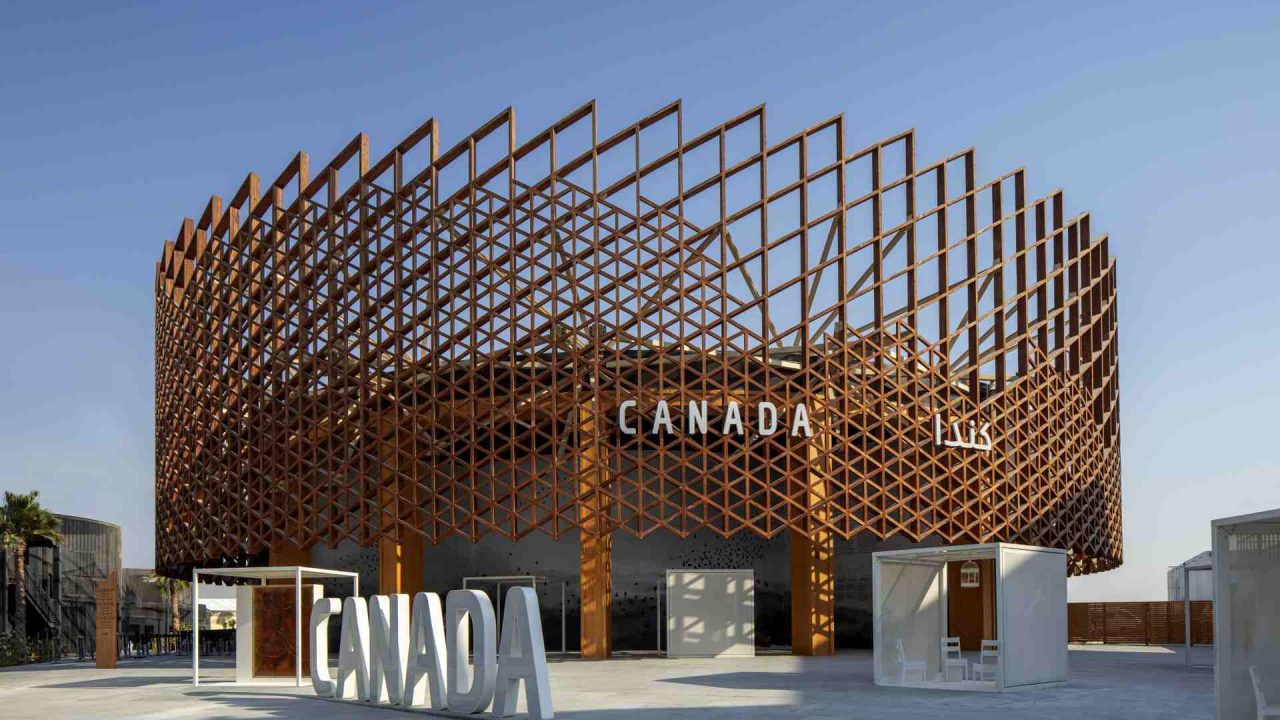
Higher Learning | TRACES
Higher Learning | TRACES
TRACES is the National Film Board’s immersive, multimedia production for Expo 2020 Dubai. Created by an interdisciplinary team of architects, artists and designers, TRACES is an expansive installation that invites viewers to contemplate the precarity of the environment in the face of human-driven climate change.
Artist and architect Rami Bebawi, one of the creators of TRACES, describes using an “experiential strategy” to elicit both emotional and intellectual engagement with the unsettling content. The project consists of eight human-sized “boxes,” which allow viewers to interact with the objects, soundscapes and architecture of the installation in an intimate and free-flowing way. Each “box” is a partially open-sided room that contains within it a large, luminous amber cube. Trapped within the cube is a murmuration, or flock of birds, frozen in mid-flight. These cubes, or “fossils” as Bebawi calls them, invite viewers to admire the beauty of the natural world while simultaneously acknowledging the reality of habitat loss and despeciation caused by global warming.
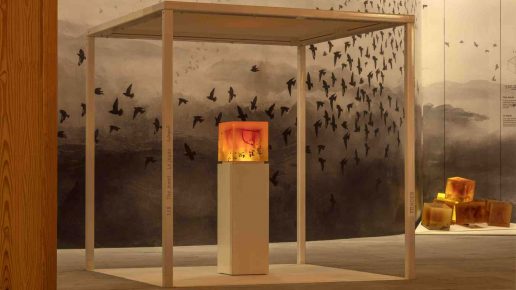
Located both on the outside plaza and within the Canadian Pavilion, TRACES seamlessly blends with the landscape and environment it’s situated in. Viewers are able to experience the project in an organic, non-sequential way, giving each participant a unique narrative experience. This interdisciplinary and multisensorial installation continues the tradition of non-linear or alternative storytelling that forms the core of the NFB’s mission. Recently, I had a chance to ask Bebawi about the process of creating TRACES and its reception at Expo 2020 Dubai.
Who made up the interdisciplinary team behind TRACES and how did each creative entity contribute to the project?
The project originated when a call came from Global Affairs Canada. They commissioned the NFB for a public installation at the Canada Pavilion in Dubai, intended for use at the plaza, up front at the entry.
The team consisted of three main parties. Creos, a firm which specializes in production and makes artwork that travels around the world. They also asked Etienne Paquette, who’s more of a multimedia artist and artistic director. And they commissioned KANVA, who was responsible for the original concept, artistic direction and project execution. Those were the three main entities, but of course there were many more people working on the project, from artists to engineers. It was a large team.
How does TRACES explore the themes of global warming while also offering viewers a contemporary reflection of Canada?
The Universal Expo has a lot to do with sharing, whether it be through technology, more emotional aspects, and so forth. It’s a land where all these countries come together and try to share what they’re about. And it’s always delicate, because you want to put out something that has international meaning but is also relatable locally.
When we were approached to think about this, Canada already had a position on global warming and climate change, so we looked into it deeper. KANVA has been working on this issue for a long time, with past projects such as the Biodome or the Science Museum. We tried to look at Canada as a very rich country, with a vast ecosystem, but the impact of global warming and climate change are affecting all of us, whether it’s fires out West, or erosion out East, there is an impact everywhere. What comes with all that fading away is the fading away of different species.
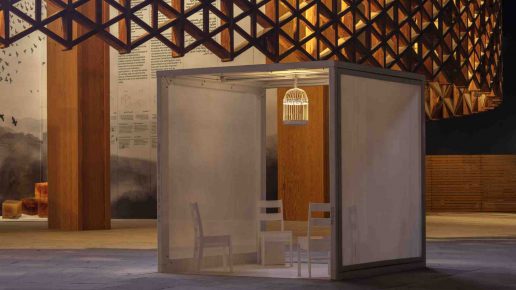
The reflection to be had behind TRACES is how do we address this disappearance of species, how do we keep this collective memory, but also how do we acknowledge the fact that it’s going at such a high speed? That the disappearance of species is so rapid. That reflection is one that is specific to Canada but can be applied to the rest of the world, but we contextualize it within the reflection of Canada because we have such a vast, varied and precious nature.
What is the significance of the “fossils”?
We wanted to create an installation that’s compelling, beautiful and so forth, but that thinks about this disappearance. We imagined that species are fading so quickly, that for a moment, you can imagine a murmuration of birds, in mid-air, fossilized.

Fossils speak of a past, or disappeared, species. It’s a trace of what’s gone. Why birds? Birds don’t think about boundaries, they’re international, they’re the symbol of freedom, and life. You can envision them flying collectively, and then they’re instantly fossilized. That’s how fast the species are going away.
We created fossils. We studied birds, then we created sculptures of birds, 3D scanning them and animating them to get different movements. Once we had different movements, we 3D printed hundreds and hundreds of birds, at different scales and in different positions. They were placed in different boxes, and a medium was poured in. The medium created an exothermic reaction, getting an amber colour and cracking—and all of a sudden, we had fossilized birds.
TRACES invites viewers to physically interact with the objects and spaces in the installation. What is the significance of this physical interaction?
We created eight cubes, two metres by two metres, where each one is a different experience; a different chapter of the same story having to do with these fossilized birds. We wanted people to be able to interact. We didn’t want people to just see a bird that’s frozen and just bring sadness. When humans participate, can they bring it back to life and therefore push forward this idea that human participation can be positive if we address this global emergency?
Each box has a different name. ‘The Jewel’ is a pure cube on a pedestal, like a museum object, a symbol of its value. ‘The Memorial’ is like a horizontal tombstone with a landscape below, and birds frozen in this medium above, paying homage to a vanished species. ‘The Forgotten’ is a cube in which we took the prototypes and threw them to the floor, which speaks to how we treat something valuable. ‘The Seat’ features an old school desk, the kind where the top lifts up. When you open it, inside is one big bird, looking at you, trapped in a natural disaster, and you hear the sounds of the ocean.
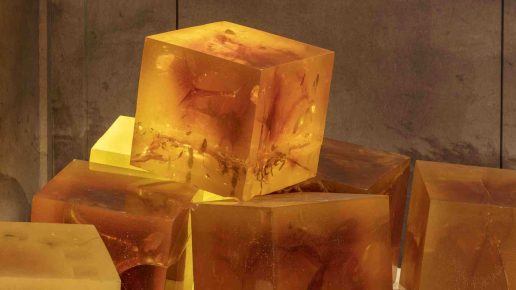
‘The Gathering’ has a cube with a fossil in the middle of a kitchen table. The sounds as you arrive are a little disturbing, as if the flock wants to fly away, but the more people who sit, the more a light appears and the sounds become melodies, showing how we have to address this collectively. ‘The Awareness’ has four chairs in the middle of a cube, with an empty birdcage suspended from above. It’s the only one with no fossil, and as you sit, you hear melodies of the garden, which would be the bird. The cage is a symbol of humans wanting to dominate another species, but it’s empty. The bird has left. ‘The Sanctuary’ is the only cube that cannot be entered and references the notion of rewilding, wherein in order to protect nature, we have to prevent humans from going into certain places.
At the end, there’s an enormous mural of a landscape that blurs the lines between water and trees, all the vistas of Canada, and you become part of this landscape.
What role can architecture and art play in the discussion surrounding human driven climate change?
There are different ways architecture can contribute to climate change. There are scientific, pragmatic ones having to do with eco-responsibility, selection of materials, your energy systems—building green. There’s also a notion of sensitivity. Can the exterior walls become a habitat for other species? Can we avoid building closed, controlled systems that increase climatic catastrophes, which becomes a vicious circle?
When we put out projects, whether they’re art or architecture, we keep in mind the idea of heart, head, hands. The idea is that when you put forward a project, the first thing to address is the heart. Can you create an emotional attachment, whether to a building, an art piece, an experience? Do you have an attachment that touches your heart? If yes, we reach the next step, the head. Can we put forward a message? There has to be meaning. Finally, the hand, contrary to the footprint that you leave behind, can you promote a positive action? Can you help make collective or individual change?
So the message of heart, head, hands is very clear in TRACES. The beauty of the installation is that it’s seductive. And there’s a fragility to it, because when you mix it with the lighting and the soundscape, you get this precious thing you’ve become attached to. The head is the message; if we only had one cube, the message wouldn’t be as readily understood. But as there are eight chapters of the same story, it comes across. The hand, hoping that people who leave there will have a different view on things, maybe question certain habits. Perhaps it will help not place humans at the central place in the universe, but more as part of the balance.
After the World Expo ends what will become of TRACES?
The installation was meant to be a travelling exhibition. It started at the Expo in Dubai, which was a great place to start. It brought a lot of meaning in regard with what was happening with the Canadian presence, but from there it tours for three to five years around the world. The schedule hasn’t been finalized, due to what’s going on around the world, but it was definitely designed to travel, in the same way the birds do.
Jill Ho-You is an Assistant Professor in Print Media at the Alberta University of the Arts in Calgary, AB, Canada. Her creative practice and research explores the intersection of trauma and the environment through a mixture of print media, bioArt and installation.
Pour lire cet article en français, cliquez ici.
Discover more Educational blog posts | Watch educational films on NFB Education | Watch educational playlists on NFB Education | Follow NFB Education on Facebook | Follow NFB Education on Pinterest | Subscribe to the NFB Education Newsletter
